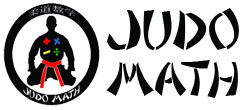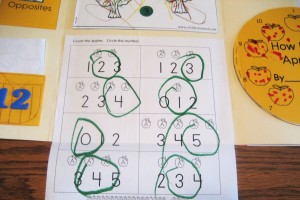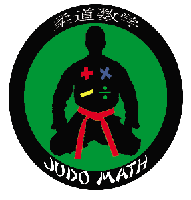Why Math Might Be The Secret To School Success
By Anya Kamenetz, NPR Little children are big news this week, as the White House holds a summit on early childhood education December 10. The President wants every four year old to go to preschool, but the new Congress is unlikely to foot that bill. Since last year, more than 30 states have expanded access to preschool. But there’s still a lack of evidence about exactly what kinds of interventions are most effective in those crucial early years. In New York City, an ambitious, $25 million dollar study is collecting evidence on the best way to raise outcomes for kids in poverty. Their hunch is that it may begin with math. Time That Counts “One! Two! Three! Four! Five!” Gayle Conigliaro’s preschool class are jumping as they count, to get the feeling of the numbers into their bodies–a concept called “embodied cognition.” P.S. 43 is located in Far Rockaway, Queens, just steps from the ocean. The area is still recovering from Hurricane Sandy. But now it’s been chosen as one of 69 high-poverty sites around New York City for a research study to test whether stronger math teaching can make all the difference for young kids. The study is funded by the Robin Hood Foundation, which is dedicated to ending poverty in New York. Pamela Morris, with research group MDRC, is lead investigator. “MDRC and the Robin Hood Foundation developed a partnership really with a broad goal,” she says, “Which is, they want to change the trajectories of low income children. And to do so by focusing on preschool.” There’s plenty of evidence on the long-term importance of preschool. But why math? Morris says that a 2013 study by Greg Duncan, at the University of California, Irvine, showed that math knowledge at the beginning of elementary school was the single most powerful predictor determining whether a student would graduate from high school and attend college. “We think math might be sort of a lever to improve outcomes for kids longer term,” Morris says. But there’s a real lack of math learning in pre-K. In one study, in fact, just 58 seconds out of a five-hour preschool day was spent on math activities. Part of the problem, says Doug Clements, at the University of Denver, is that “Most teachers, of course, have been through our United States mathematics education, so they tend to think of math as just skills. They tend to think of it as a quiet activity.” Clements is the creator of Building Blocks, the math curriculum being tested in this new study. Building Blocks is designed to be just the opposite: engaging, exciting, and loud. “We want kids running around the classroom and bumping into mathematics at every turn.” At P.S. 43, math games, toys, and activities are woven through the entire day. At transition time, the teacher asks the students to line up and touches their…
Read More »3 Ways to Plan for Diverse Learners: What Teachers Do
From Edutopia In The Wizard of Oz, Dorothy and crew are so intimidated by the Wizard’s enigmatic personality that they struggle to talk with him on equal footing. Fear and frustration overwhelm them as they blindly accept a suicide mission to slay the Witch of the West. In return, they each received a treasured prize, a heart, a brain, courage, and a way home. Ironically, they already had these gifts — metaphorically, which they only discover after unveiling the man behind the curtain, posing as the grumpy wizard. Differentiated Instruction (DI) casts a spell on educators as to how it meets all students’ needs. The skillset required to differentiate seems mystical to some and incomprehensible to others in this environment of state standards and high-stakes tests. Where does one find the time? The reality is that every teacher already has the tools to differentiate in powerful ways for all learners. Some elements were revealed in my two previous articles, regarding myths and assessment fog. The DI elements were first introduced to me in How to Differentiate Instruction in Mixed-Ability Classrooms by Carol Tomlinson, and my understanding later deepened thanks to my friend and mentor, Dr. Susan Allan. The core of differentiation is a relationship between teachers and students. The teacher’s responsibility is connecting content, process, andproduct. Students respond to learning based on readiness, interests, andlearning profile. In this post, we’ll explore the teacher’s role for effective planning of DI, and in the next three posts, we’ll look at how students respond. Content, process, and product are what teachers address all the time during lesson planning and instruction. These are the areas where teachers have tremendous experience in everything from lesson planning to assessment. Once the curtain is removed for how these three areas can be differentiated, meeting diverse needs of students becomes obvious and easy to do — because it’s always been present. Differentiating ContentContent is comprised of the knowledge, concepts, and skills that students need to learn based on the curriculum. Differentiating content includes using various delivery formats such as video, readings, lectures, or audio. Content may be chunked, shared through graphic organizers, addressed throughjigsaw groups, or used to provide different techniques for solving equations. Students may have opportunities to choose their content focus based on interests. For example, in a lesson on fractions, students could: Watch an overview video from Khan Academy. Complete a Frayer Model for academic vocabulary, such as denominator and numerator. Watch and discuss a demonstration of fractions via cutting a cake. Eat the cake. Differentiating ProcessProcess is how students make sense of the content. They need time to reflect and digest the learning activities before moving on to the next segment of a lesson. Think of a workshop or course where, by the end of the session, you felt filled to bursting with information, perhaps even overwhelmed. Processing helps students assess what they…
Read More »27 Ways To Increase Student Engagement In Learning
Student engagement in learning is kind of important. No matter the best practices of your curriculum mapping, instructional strategies, use of data for learning, formative assessment, or expert use of project-based learning, mobile learning, and a flipped classroom, if students aren’t engaged, most is for naught. Historically, student engagement has been thought of in terms of students “paying attention”: raising hands, asking questions, and making eye contact. Of course, we know now that learning can benefit from learner self-direction and self-initiated transfer of thinking as much as it does simple “engagement” and participation. That being said, increasing engagement and sheer participation is not a wrong-headed pursuit in and of itself, and in pursuit of that is the following infographic from Mia MacMeekin: 27 ways to increase student engagement. Divers diseases can affect the muscles that can slow the flow of blood, cause erectile dysfunction. Currently more than half of men aged over 50 reported some degree of erectile dysfunctions. A general sexual appeal among men is the erectile dysfunction. Now many articles were published about http://finasteride.me/. Our article tell more about the evaluation of erectile disfunction and “finasteride“. Questions, like “finasteride drug“, are linked variant types of soundness problems. Keep reading for a list of drugs that can cause side effects and what you can do to put an end to feasible side effects. Sometimes medical conditions or other medicaments may interact with Viagra. Before buying this generic, tell your physician if you are allergic to…
Read More »How to Fight Your Kid’s Math Anxiety
By Manoush Zomorodi Manoush Zomorodi is the host and managing editor of New Tech City on WNYC, a public radio station in New York City. Fear of math is a real thing. I thought I was the only a neurotic freak who struggled with fractions in third grade, avoided taking calculus in high school, and dropped out of physics for non-science majors in college. But it turns out an emotional reaction to all things numeric now has an official label: math anxiety. The roots of “math anxiety”Mark Ashcraft heads the psychology department at the University of Las Vegas and has made his name researching math anxiety. “We’ve even seen it in very young children, say first or second grade. But typically math anxiety starts to show up along the sixth grade, seventh grade level,” Ashcraft told me. What starts as pre-test jitters festers into a full-blown belief that you just can’t do math. At all. Ashcraft says this defeatist attitude affects all kinds of life decisions, like choosing a major because it requires no math. Or, in my case, never balancing my checkbook. There is also evidence that little girls learn math anxious attitudes from female teachers. Meanwhile, studies have shown that it’s the anxiety itself, not any innate disability, that prevents students from conquering math. How the body affects the mindAnxiety hampers us from thinking, our brain just shuts down. This isn’t a new concept. As a society we are fascinated with finding ways of hacking the mind-body connection. It’s why yoga is mainstream and meditation is on the ascent. And why Harvard Business School professor Amy Cuddy’s TED Talk,”Your body language shapes who you are,” has been viewed more than 17 million times. Cuddy is a social psychologist who studied the hormones people produce when they are in what she calls “power poses” and “low-power poses.” Stand up straight with arms outstretched and after two minutes, Cuddy found you produce more of the confidence hormone testosterone and less of the stress hormone cortisol. Curl up into a fetal position or crouch over your cell phone and you’ll get less of the confidence hormone and more of the anxiety hormone. As a result of her research, here’s what Cuddy advises: Before you go into the next stressful evaluative situation, for two minutes, try doing this, in the elevator, in a bathroom stall, at your desk behind closed doors. That’s what you want to do. Configure your brain to cope the best in that situation. Get your testosterone up. Get your cortisol down. A game that links power-posing to mathSusan Isbister, the head NYU Polytechnic School of Engineering’s Game Innovation Lab, saw Cuddy’s talk and had a eureka moment. “I thought hey, math anxiety is a real problem with kids and if this power posing really works to increase confidence and help kids take risks, that would be fabulous,”…
Read More »Creating Your own Open-Ended Math Questions
There are times when you will want or need to create your own. One way to create new items is to change closed-ended questions into open-ended ones. In the examples following, notice how the revised questions are more conceptually oriented and require students to communicate their thinking processes: Original Question: Which of the following numbers are prime? 7, 57, 67, 117 Revised Question: Fred thinks that 57 and 67 are prime because they both end in 7, which is a prime number. Dick says he is wrong. Who is correct and why? My experience over the past 13 years in teaching has shown me that, in general, teachers do not have time to create a large number of open-ended questions. But when they do, there are certain “heuristics” that can help. Ask Students to Create a Situation or an Example That Satisfies Certain Conditions Questions of this type require students to recognize the defining characteristics of the underlying concept. Students must take what they know about a concept and apply it to create an example. (In each of the examples below the student is asked to create a number or some kind of mathematical object that satisfies certain criteria.) Sample Elementary-Level Questions Make a 4-digit even number using the digits below. Explain why your number is even. 3 6 7 1 5 _____ _____ _____ _____ Give an example of an event that has a probability of 0. Explain how you know the probability is 0. Draw a rectangle and label the sides so that the perimeter is between 19 and 20 units. Explain how you know the perimeter is greater than 19 and less than 20. Sample Middle School-Level Questions Identify three numbers whose greatest common factor is 5 and whose least common multiple is 180. Describe how you found the numbers. Create a set of data that would satisfy the following conditions: The set includes 7 data points. The range is 10 units. The mean is greater than the median. Show that your data set satisfies the conditions. Sample High School-Level Questions Write an irrational number whose square is smaller than itself. Explain why your number fits the criteria or argue that it is not possible to write such a number. Write a data set consisting of 10 numbers so that the range is twice the median. Show that your data set satisfies the criteria. Give the dimensions of a cone and a cylinder that have the same volume. Show that the two solids have the same volume. Write an equation of a circle that contains the points (-4, -3) and (6,1). Graph your circle and explain why its equation satisfies the given condition. Ask Students to Explain Who Is Correct and Why These types of items present two or more views of some mathematical concept or principle and the student has to decide which of the…
Read More »


 Judo Math motivates all students to take responsibility. There are no ability groups, just pacing groups. By the end of each discipline, everyone is a black belt rank, reinforcing the unity of the class.
Judo Math motivates all students to take responsibility. There are no ability groups, just pacing groups. By the end of each discipline, everyone is a black belt rank, reinforcing the unity of the class.  www.capjax.com
www.capjax.com